Unlike other breakwaters, oysterbreaks are living communities
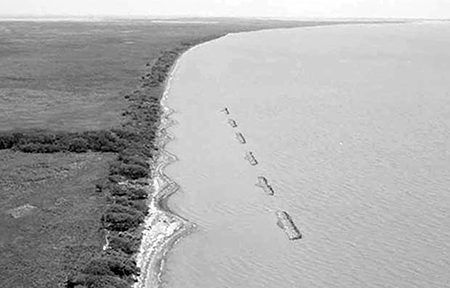
Coastal wetlands are being lost throughout the world due to erosion. Among these erosion hot spots is the coastline of Louisiana, USA, which not only suffers from high erosion rates, but also subsidence (soil compaction that results in sinking of the land), frequent hurricanes, and tropical storms. These problems, together with anthropogenic effects, heavily contribute to Louisiana’s high land-loss rate.
Slowing down erosion
Attempts at slowing down coastal erosion have been made throughout south Louisiana’s coast. Some of the solutions have included using Christmas trees, old tires, sand bags, plants, and coastal mats as barriers for sediment transport. Recent efforts in Louisiana have been focused on largescale projects like breakwater systems and river diversions.
The breakwaters are constructed mainly from limestone, but also include concrete blocks, sunken barges, and toppled oil platforms. Use of these heavy materials creates problems associated with their transport. The materials must be brought in on barges, which need a draft much deeper than typically exists in the desired sites. Consequently, dredging must be done to get the barges into position. All too often, material put into place on the bottom eventually sinks beyond the point of effectiveness.
Considering the environment
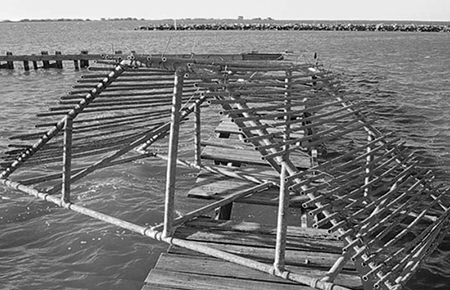
Louisiana has a unique abundance of life that exists in a fragile equilibrium. When solving environmental problems such as erosion, consideration must be given to this natural balance.
Construction of breakwaters wreaks havoc on the benthic life and natural fauna that inhabit these waters. Perhaps natural resources abundant in Louisiana could be used to solve erosion problems.
Interest in using oyster reefs to address erosion has recently emerged. Oyster shells and crushed limestone have been traditionally used as cultch to stimulate oyster growth by spreading them on the bottom. A technique to stimulate oyster growth in the shape of a breakwater is being developed at the Department of Biological and Agricultural Engineering at Louisiana State University in Baton Rouge.
Oysterbreaks
An “oysterbreak” is an engineered structure that facilitates the formation of a submerged breakwater by stimulating oyster growth in a desired configuration. Contrary to other breakwaters constructed from rock or limestone, these structures are constructed of lightweight PVC. And unlike other breakwaters, oysterbreaks are living communities.
As the structures settle and sediments build up, the oysters continue to grow towards the surface. The rising crest of the structure allows for continual trapping of sediments and counterbalances any sinking that occurs.
Since they are essentially open space, oysterbreaks allow the oysters to develop the bulk of the structure. This makes oysterbreaks easier to transport than riprap or limestone used for breakwaters.
Oysterbreaks are engineered to maximize the strength of the structure while minimizing the bulk of material deployed. The PVC structure provides strength until the oysters can support the structural integrity. Selective settling, attachment, and growth of the oysters in a specific shape facilitate the formation of a submerged breakwater. This is accomplished by covering the oysterbreak with a surface that promotes oyster settlement and growth.
The prototype structure was covered with French tubes that are used to grow oysters commercially. These tubes are corrugated to allow maximum surface area for oyster attachment and spaced to establish hydrodynamics desirable for oyster reef establishment. They are also spaced so the oysters will eventually close in the gaps between the tubes and strengthen the structure.
Other substrates are being considered for oysterbreaks, such as formed concrete and coated chicken wire. The eventual substrate of choice will provide strength, maximum surface area, and low density.
Benefits beyond erosion control
Oysterbreaks utilize the reef-building characteristics of Louisiana’s oysters, which stabilize marshland and provide habitat that enriches the coastal ecosystem, to reduce and even reverse coastal erosion. The implementation of oysterbreaks throughout Louisiana’s coastline, however, could have benefits far beyond that of erosion control alone.
It would increase productivity in natural oyster reefs. An increase in the number of oysters spawning in the coastal zone would allow more oyster larvae to land on other oyster reefs in surrounding areas. In addition, the project would provide an environment conducive to fish breeding, which could increase Louisiana’s fisheries production.
(Editor’s Note: This article was originally published in the June 2003 print edition of the Global Aquaculture Advocate.)
Now that you've reached the end of the article ...
… please consider supporting GSA’s mission to advance responsible seafood practices through education, advocacy and third-party assurances. The Advocate aims to document the evolution of responsible seafood practices and share the expansive knowledge of our vast network of contributors.
By becoming a Global Seafood Alliance member, you’re ensuring that all of the pre-competitive work we do through member benefits, resources and events can continue. Individual membership costs just $50 a year.
Not a GSA member? Join us.
Authors
-
Matthew Campbell
Department of Biological and Agricultural Engineering
Room 149 E.B. Doran Building
Louisiana State University
Baton Rouge, Louisiana 70803 USA[117,100,101,46,117,115,108,64,49,98,112,109,97,99,109]
-
Steven Hall, Ph.D., P.E.
Department of Biological and Agricultural Engineering
Room 149 E.B. Doran Building
Louisiana State University
Baton Rouge, Louisiana 70803 USA
Tagged With
Related Posts
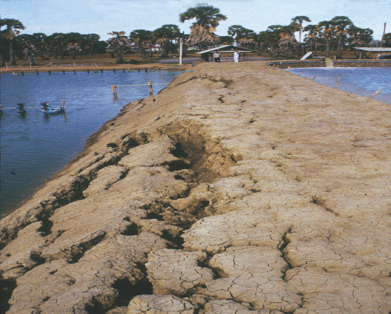
Responsibility
Erosion, sedimentation in earthen aquaculture ponds
The control of external inputs of suspended soil particles to ponds and internal erosion of embankments and bottoms should begin at the design and construction stage.
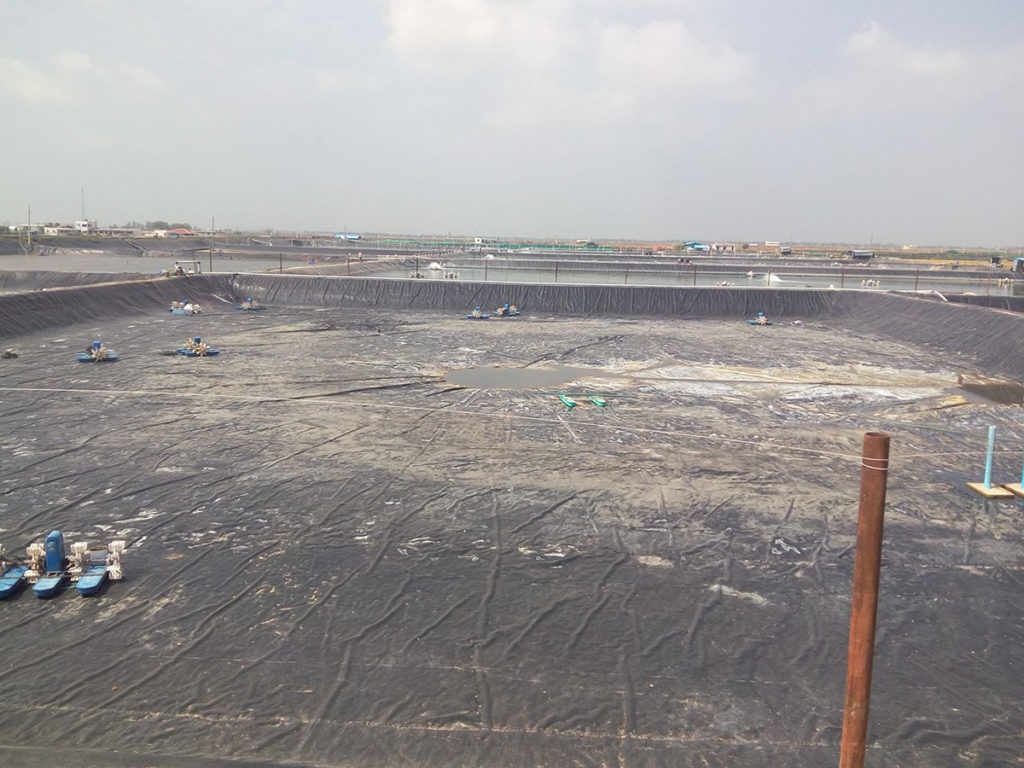
Responsibility
Appraising pond liners for shrimp culture
The use of plastic-lined ponds by shrimp farmers can significantly improve production efficiency, support more production cycles per year, and higher mechanical aeration rates and stocking densities. The capital cost of lining ponds can be very significant, so a thorough feasibility analysis is recommended when considering this production tool.
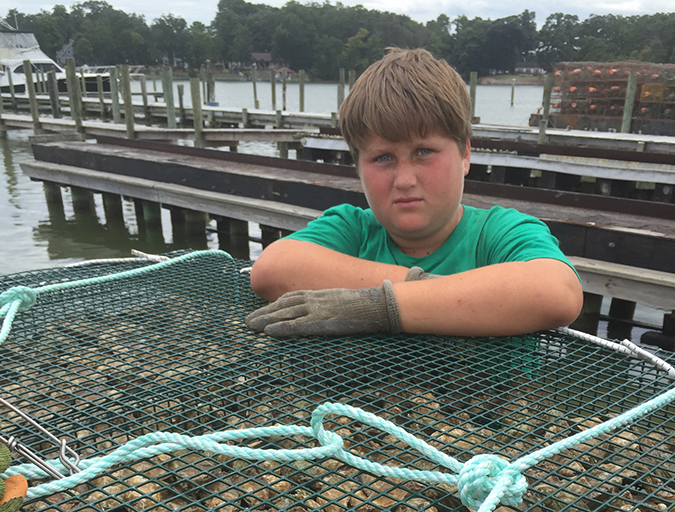
Responsibility
Ailing waterways hail the oyster’s return
The Lower Hudson Estuary and Chesapeake Bay, two waterways once home to thriving oyster beds, would welcome the shellfish’s return. Aquaculture initiatives in both areas aim to reinvigorate the water and the communities they support.
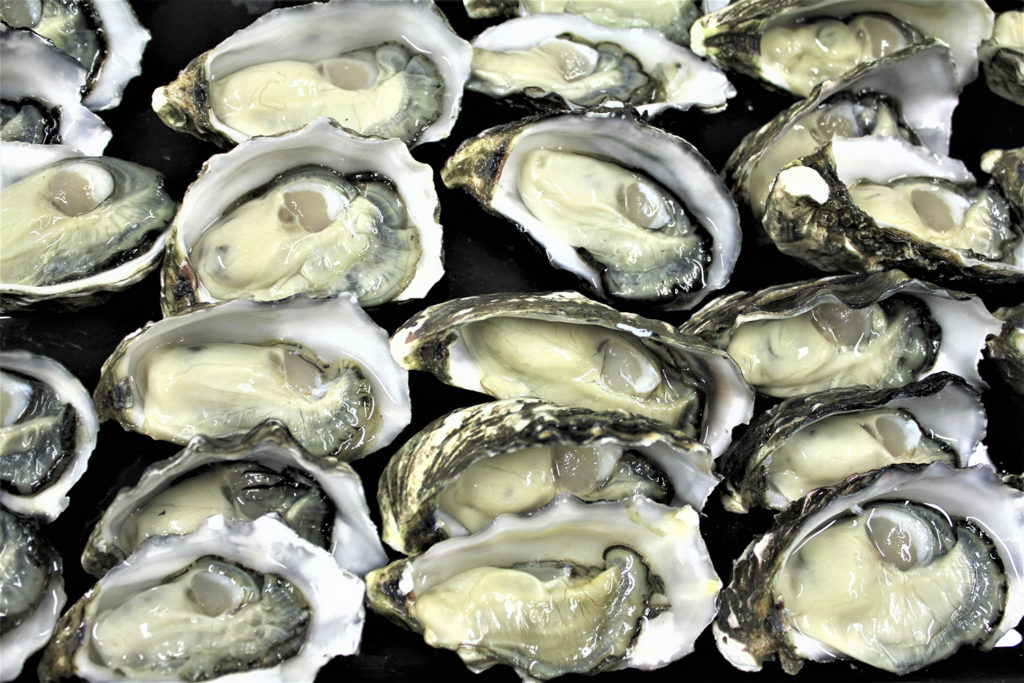
Intelligence
A model for estimating pathogen variability in shellfish
This study reports on the development of a mathematical model for the shellfish depuration process and its impact on norovirus levels found in shellfish.


